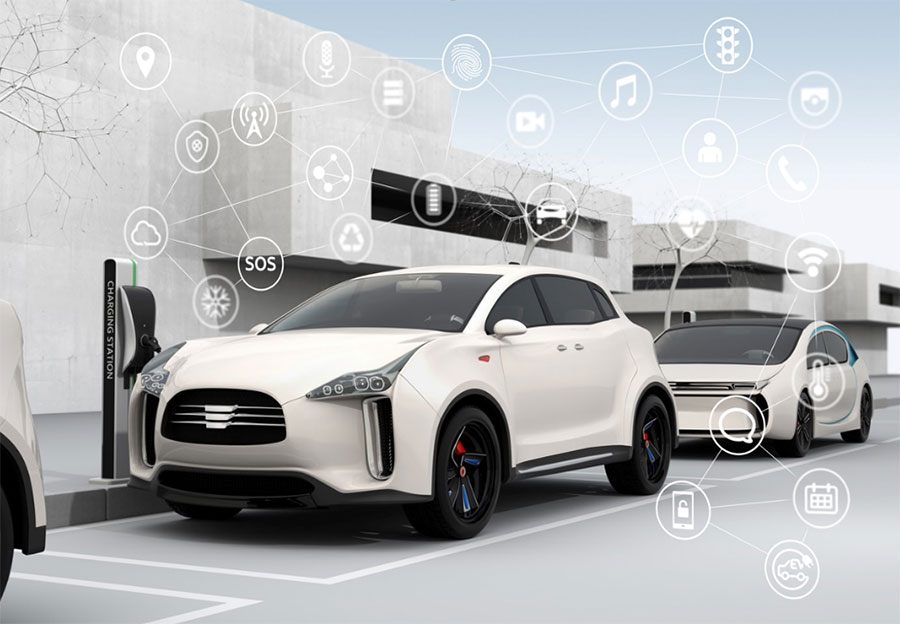New technologies, like AIT or artificial technologies, along with its subset, IoT, Computing Vision, Smart Robotics, Machine Learning, and mobility, are promoting innovation, especially in the connected and autonomous vehicle industry.
Increasing momentum is being experienced with a CAGR or compound annual growth rate to be higher than 15% during the coming four years. The key benefits include improvement in driving security along with overall safety.

That is also through crash avoidance systems, driving assistance, along overall reduced human error. With devices, which are fitted with OBD or on-board diagnostic systems, vehicle reliability is enhanced.
The speech recognition and operational improvements that include reduced traffic congestion, traffic control, optimized freight flow, and overall improved mobility offer much better human-machine integration.
Apart from the automotive industry, all these possibilities are also crucial for other surrounding industries like insurance, logistics, transportation infrastructure, transportation, engineers, and some other professionals as well.
In the case of insurance, some new services will come up. They are theft tracking, breakdown data, and automated emergency callout. Along with improving vehicle telematics, it also helps in reducing insurance frauds.
Significant Risks Co-related With Autonomous And Connected Vehicles
Though all the possibilities which are the result of integrating devices with vehicles are almost unlimited, there are also new vulnerabilities and threats that are arising.
Now, apart from the traditional cyberattacks on the pieces of information along with the running of the vehicle, some new forms of attacks are becoming major concerns. IoT attacks, ransomware, Vehicle theft, and DDoS are some of the long lists.
As a result of their connected result, it also raises the security risks for the network to which they are connected. That can be roadside sensor networks, financial networks, which process payments, traffic control features, and electricity infrastructure.
For software development activities, the traditional industry approach is first securing product safety and quality with a lesser focus on other things like automotive cybersecurity. This used to represent too high risks and has to undergo important procedural and cultural changes.
For automotive companies, software development is a fairly new activity. Currently, it is mainly focused on making sure that the product quality is secure and eventually the safety of the passengers.
Companies are now following the norms, like ISO 26262, which is related to the functional safety on the road of the vehicle. The Automotive SPICE initiative is aiming at improving the quality along with the controlling processes.
Most automotive manufacturers do not allow the OTA or over-the-air update of their respective software of the vehicles. As a result of this, any identified bug always needs the retrieval of the particular vehicle.
Potential Solutions To Minimize Cybersecurity Risks
A layered approach to vehicle cybersecurity actively minimizes the chances of successful vehicle cyberattacks, along with mitigating all the potential consequences of an intuition that is successful.
In order to develop layered cybersecurity protection with a comprehensive and systematic approach for vehicles contains the following things.
- Development of standards, which articulate the best practices.
- Timely detection of potential vehicle cybersecurity incidents and also a rapid response to it.
- For critical vehicle systems, a prioritized identification and protection process on the basis of the risks.
- For facilitating early adoption of industry-wide learned lessons, certain methods for effective intelligence along with across the industry information sharing.
- Measure, methods, and architects that design in cyber resilience and also cybersecurity enhanced rapid recovery from any incidents at the time it occurs.
Important Challenges
Pricing is one of the basic concerns. Without having foot-proof, robust cybersecurity designed for autonomous infrastructure, systems, and vehicles, and that too at an affordable cost, mass-market viable for all these vehicles simply will not come into reality.
Customers may refuse to pay the premium costs associated with embedded connectivity. Standardization is another crucial challenge. Across the region, the lack of unified protocol will increase interoperability, complexity, and obviously the costs.
Conclusion
So, this is all that experts are thinking about the excessive or rather need for cybersecurity infrastructure in the industry of smart vehicles. Just like everything else, it also has some goods and also some bad aspects at the same time.
Leave a Reply